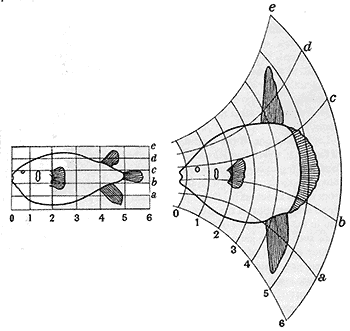|
|
A long time ago in a tropical place far, far away, a strange group of tailless fishes emerged from a coral reef and over millions of year took to the coastal waters–and the neighborhood’s never been the same since. . .
On-going fossil work coupled with genetic sleuthing is slowly revealing the evolutionary history of these magnificent fish. Fossil jaw parts of the genus Eomola suggest the Molidae family descended from coral reef fishes sometime in the middle Eocene– roughly 40 million years ago (Santini and Tyler, 2002). Since their first appearance, sunfish have spread into every tropical and temperate ocean.
While the Molidae may appear primitive, they are in fact relative latecomers to the fish world. Fishes first emerged over 500 million years ago and the radiation leading to most modern fishes occurred about 100 million years ago. It took another 50 million years for Molidae to appear. In fact, molas are thought to be one of the most recently derived fish groups in the sea.
RELATIONSHIPS
 Molas
occupy the same order (Tetraodontiformes) as do the puffers
and porcupine fishes. The name Tetraodontiformes refers to
the four fused teeth that comprise their characteristic beak.
While their inflatable relatives can defend themselves by sucking
in water and puffing up, molas suck and spit water primarily
as a means of manipulating prey items into manageable pieces.
Long claw like teeth in their throat help this process. Molas
occupy the same order (Tetraodontiformes) as do the puffers
and porcupine fishes. The name Tetraodontiformes refers to
the four fused teeth that comprise their characteristic beak.
While their inflatable relatives can defend themselves by sucking
in water and puffing up, molas suck and spit water primarily
as a means of manipulating prey items into manageable pieces.
Long claw like teeth in their throat help this process.

From D’Arcy Thompson’s On Growth and Form
|
|
|